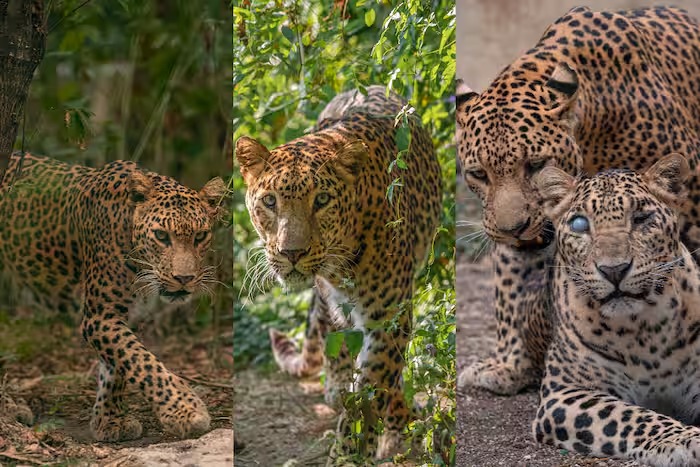Spotted big cats get much-needed love and support from Manikdoh Leopard Rescue Center
Leopard Rescue Center: Located in the Pune district’s Junnar area, Maharashtra’s first leopard rescue center provides a haven for several old leopards who have been cared for throughout their last years. 39 leopards are now housed in the Manikdoh Leopard Rescue Center, which is run collaboratively by the Maharashtra Forest Department and Wildlife SOS. Of them, over 60% need geriatric care.

The majority of the animals housed at the rescue center were either abandoned in the wild, victims of poaching efforts by traffickers, or subjects of disputes between humans and leopards. The lives of the leopards in the care of Wildlife SOS and Junnar Forest Division have been transformed after they were saved from certain deaths. They have lived in a nearly natural habitat for the most part of their lives, with the addition of veterinary care, medical attention, and a balanced diet.
Two male leopards that live together, Ganesh and Vitthal, are not just elderly but also have different kinds of infirmities. Ganesh lacks a hind paw, but Vitthal is totally blind. Therefore, caring for elderly leopards with impairments is a greater difficulty, but the sanctuary’s care team is always up to date. While the caretakers prepare food and olfactory enrichments for the visually impaired Ganesh, structural enrichments such as platforms are built at lower levels with consideration for Vitthal’s physical limitations.
The age at which a leopard enters its latter years varies from species to species, although it generally starts around age 12. This is the stage when the leopards have an increase in tooth difficulties, joint problems, and a noticeable shift in their general behavior and demeanor. The difference is really noticeable, even for the elderly leopards that are cared for by the Junnar Forest Division and Wildlife SOS.
“Leopards suffer from dental problems such as broken teeth, accumulation of plaque, tartar, and root problems,” said Dr. Chandan Sawane, Veterinary Officer, Wildlife SOS. Their inability to chew food effectively is hampered by these problems. Their inability to eat causes them to have a severe lack of appetite, which lowers their immunity. We wipe up the tar and look for any potentially problematic teeth that are partially cracked or blunt canines during routine dental examinations.
Approximately 60% of the 35 leopards that now stay at the Manikdoh Leopard Rescue Centre are elderly, according to Kartick Satyanarayan, co-founder and CEO of Wildlife SOS. Therefore, in order to guarantee the well-being of the senior leopards, our crew is very careful about their nutrition, medical attention, and health examinations.
According to Amit Bhise, Assistant Conservator of Forests, Junnar, “The leopard rescue center in Junnar was established in 2007 and serves as a sanctuary for animals that are unable to return to the wild.” The quantity of rescued leopards receiving geriatric care at this time demonstrates the efforts made by Wildlife SOS and the forest department to provide these animals with a long and healthy life.







